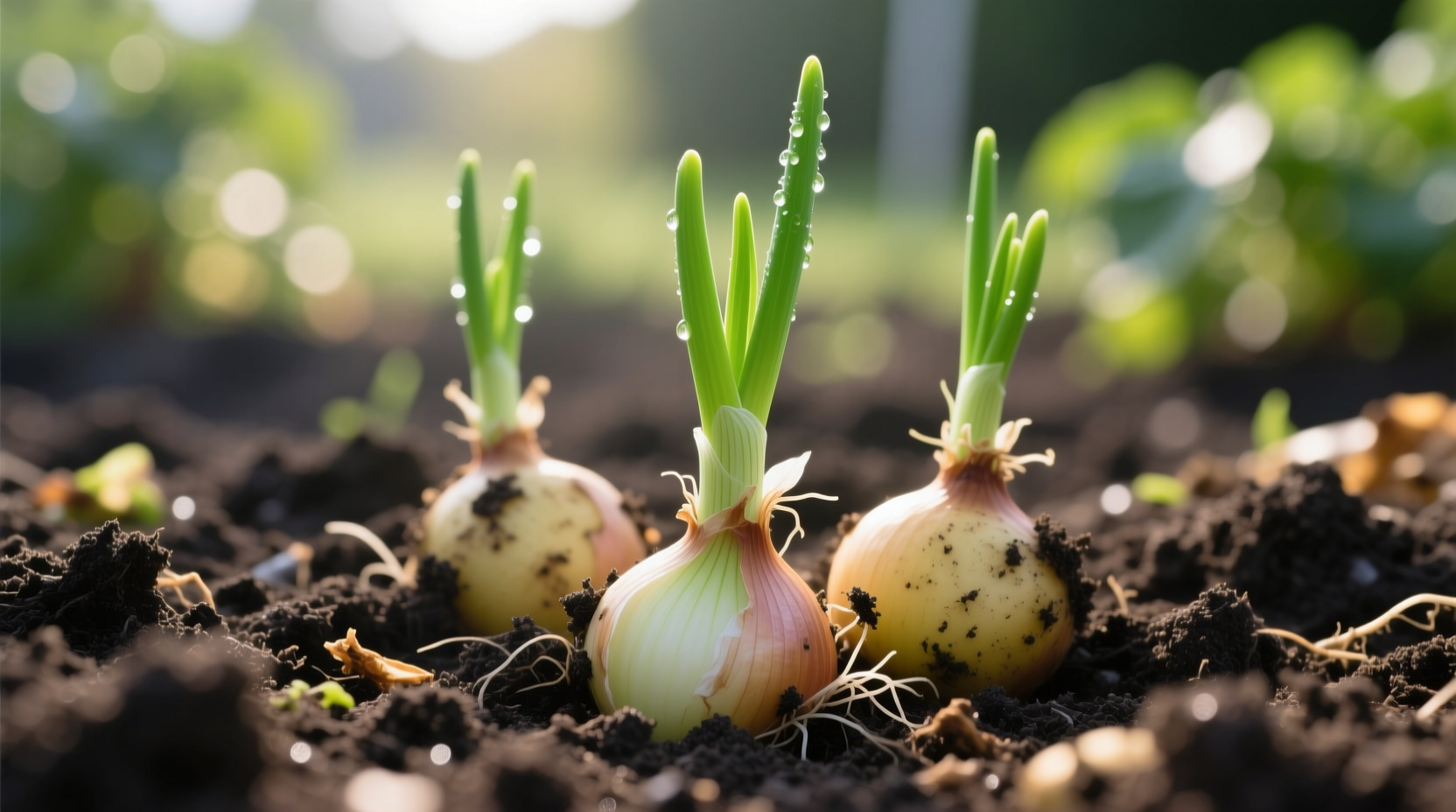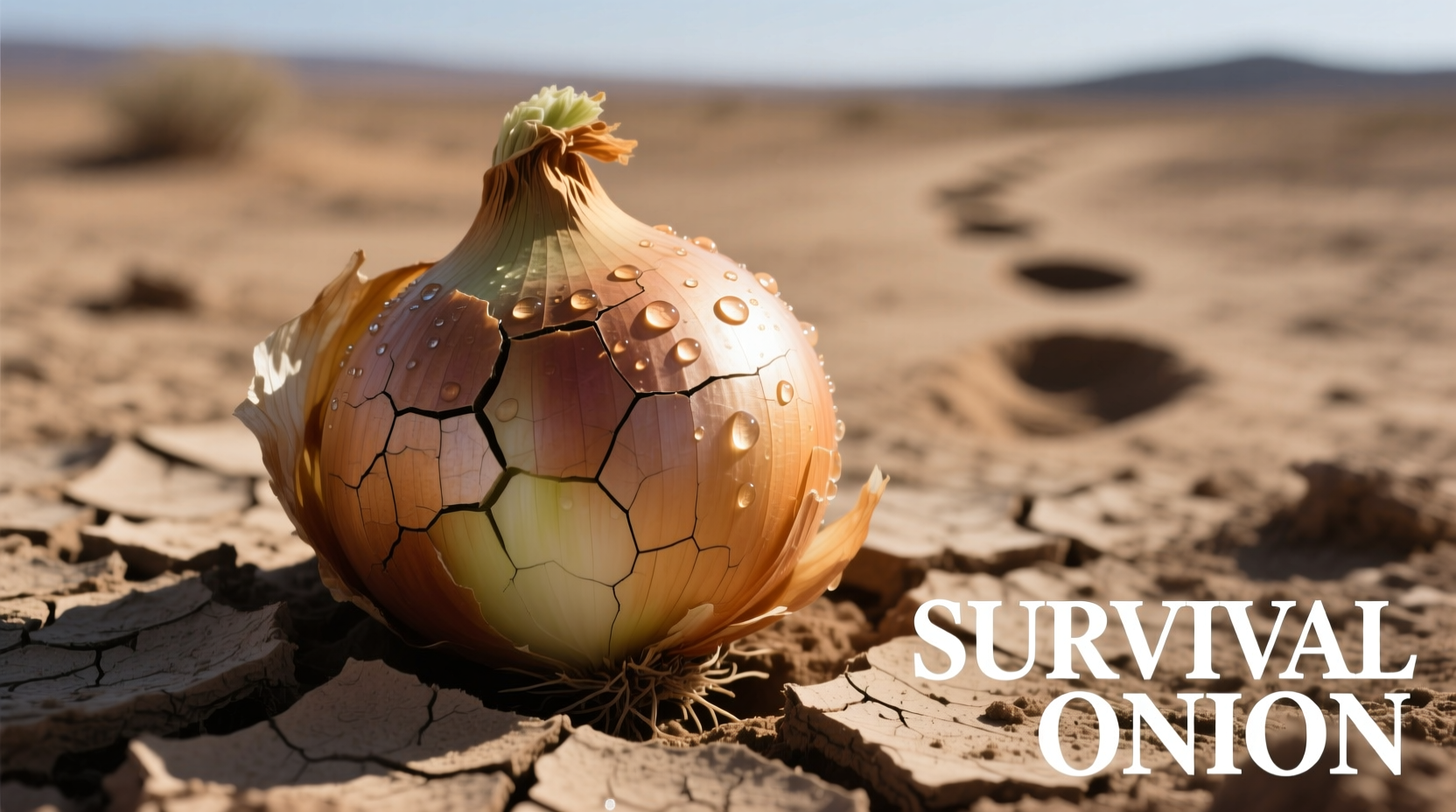When disaster strikes or resources become scarce, having reliable food sources becomes critical. Among the most valuable yet often overlooked survival crops is a specific type of onion that has sustained communities through famines, wars, and natural disasters for centuries. Unlike common grocery store onions that spoil within weeks, true survival onions offer remarkable shelf stability, nutritional benefits, and ease of cultivation with minimal inputs.
What Makes an Onion a "Survival Onion"?
Not all onions qualify as genuine survival food. The term "survival onion" refers to specific varieties that meet rigorous criteria essential for emergency preparedness:
- Extended storage life (12+ months without refrigeration)
- Vegetative propagation (grows from bulbs rather than seeds)
- Disease and pest resistance without chemical inputs
- Nutritional density providing vitamins, minerals, and medicinal compounds
- Climate adaptability thriving in diverse growing conditions
These characteristics separate true survival onions from conventional varieties that might last only 2-3 months under ideal conditions. Understanding this distinction helps preppers and homesteaders make informed choices for long-term food security.
Meet the Potato Onion: The Gold Standard for Survival
The potato onion (Allium cepa var. aggregatum), despite its misleading name, represents the most reliable survival onion variety available today. Historically documented in European agricultural records dating back to the 16th century, this heirloom variety has sustained communities through numerous historical crises.
| Characteristic | Potato Onion | Yellow Storage Onion | Green Onions |
|---|---|---|---|
| Storage Duration | 12-18 months | 4-6 months | 1-2 weeks |
| Propagation Method | Bulb division | Seeds only | Seeds/bulbs |
| Cold Hardiness | Zone 3 | Zone 5 | Zone 7 |
| Water Requirements | Low | Moderate | High |
| Nutritional Value (per 100g) | High vitamin C, B6, manganese | Moderate nutrients | Lower concentration |
This comparison clearly demonstrates why potato onions outperform conventional varieties in survival scenarios. Their ability to multiply through simple division eliminates dependence on seed suppliers during emergencies—a critical advantage when supply chains break down.
Historical Timeline: Onions as Lifesavers Through History
Understanding the historical context reveals why certain onions earned their "survival" designation:
- 1500s-1600s: Potato onions documented in European monastery gardens as reliable food source during sieges and harsh winters
- 1700s: Transported to North America by settlers who valued them for their storage capabilities during frontier winters
- 1800s: Became staple crop for pioneers on westward trails due to resilience during long journeys
- 1918-1919: Critical food source during Spanish flu pandemic when supply chains were disrupted
- World War II: Featured in "Victory Gardens" for their nutritional value and storage properties
- Modern Era: Preserved by seed saving networks as climate-resilient crop for food security
According to research from the USDA National Institute of Food and Agriculture, traditional potato onions maintained viability for up to 18 months when properly cured and stored in cool, dry conditions—significantly outperforming modern hybrid varieties (nifa.usda.gov).

Practical Growing Guide for Survival Conditions
Successfully cultivating survival onions requires understanding their specific needs, especially when resources are limited:
Planting for Maximum Resilience
Plant potato onions in late fall (4-6 weeks before first frost) for spring harvest. Unlike seed-grown onions, simply place bulbs 2-3 inches deep with pointed end up, spacing 6 inches apart. This timing allows bulbs to establish roots before winter dormancy, resulting in stronger plants come spring.
Water Conservation Techniques
In drought conditions or with limited water access:
- Use mulch (straw or leaves) to retain soil moisture
- Plant in sunken beds to capture rainwater
- Water deeply but infrequently to encourage deep root growth
- Use drip irrigation or buried clay pots for targeted watering
Natural Pest Management
Potato onions naturally repel many pests, but for additional protection:
- Interplant with carrots (their scents confuse pests)
- Use crushed eggshells around plants to deter slugs
- Plant marigolds nearby as natural nematode deterrent
- Apply wood ash sparingly to prevent onion maggots
Harvesting and Storage: Making Your Supply Last
Proper curing and storage determines whether your onion harvest lasts months or spoils within weeks:
Curing Process
- Harvest when tops naturally fall over (typically late spring/early summer)
- Dry bulbs in shaded, well-ventilated area for 2-3 weeks
- Trim roots to 1/4 inch and tops to 1 inch after curing
- Remove loose outer skins but preserve protective papery layer
Traditional Storage Methods
For long-term storage without refrigeration:
- Braiding: Hang cured onions in braids in cool, dry location
- Mesh Bags: Store in breathable mesh bags with good air circulation
- Clay Storage: Pack bulbs in dry clay slip then let dry completely
- Root Cellar: Maintain 32-40°F with 65-70% humidity for maximum longevity
Research from Cornell University's Department of Horticulture confirms that properly cured potato onions maintain quality for 12-18 months under appropriate storage conditions—significantly longer than commercial varieties (hort.cals.cornell.edu).
Medicinal and Nutritional Powerhouse
Beyond sustenance, survival onions offer critical health benefits during emergencies:
- Antibacterial properties: Effective against foodborne pathogens when antibiotics aren't available
- Immune support: High vitamin C content combats scurvy during prolonged emergencies
- Digestive aid: Prebiotic fibers support gut health when dietary variety is limited
- Wound treatment: Raw onion juice applied topically shows antimicrobial effects
A study published in the Journal of Agricultural and Food Chemistry documented onion's quercetin content as particularly valuable for maintaining cardiovascular health during stressful situations—critical when medical care is limited.
Practical Applications in Resource-Limited Cooking
Maximize your survival onion harvest with these resource-conscious techniques:
Preservation Methods
- Drying: Slice thin and air-dry for lightweight, long-lasting seasoning
- Pickling: Preserve in vinegar with minimal salt for year-round use
- Freeze-drying: If electricity available, creates shelf-stable emergency supply
- Onion powder: Grind dried slices for versatile seasoning
Culinary Efficiency Tips
- Use green tops as scallion substitute before bulbs fully form
- Save outer skins for natural yellow dye or tea
- Make onion syrup for cough relief using minimal honey
- Combine with foraged greens for nutrient-dense survival meals
Common Mistakes to Avoid
Even experienced gardeners make these critical errors with survival onions:
- Planting too deep: Bulbs need proper depth (2-3 inches) to multiply effectively
- Harvesting too early: Waiting for natural top die-back ensures proper maturity
- Insufficient curing: Rushing the curing process leads to premature spoilage
- Poor storage conditions: Humidity above 70% causes mold; below 60% causes dehydration
- Ignoring variety differences: Not all "onions" offer true survival characteristics
Understanding these context boundaries ensures your survival onion investment pays off when you need it most. Potato onions thrive in temperate climates but require different approaches in tropical regions where Egyptian walking onions might be more appropriate.
Conclusion: Building Your Food Security Foundation
Investing in true survival onions like the potato onion creates a reliable food source that requires minimal inputs yet delivers maximum security. Their ability to provide nutrition, medicine, and culinary versatility with minimal resources makes them indispensable for anyone serious about food preparedness. By understanding which varieties truly qualify as survival onions and implementing proper growing and storage techniques, you create a self-sustaining food source that can weather most emergencies.











 浙公网安备
33010002000092号
浙公网安备
33010002000092号 浙B2-20120091-4
浙B2-20120091-4